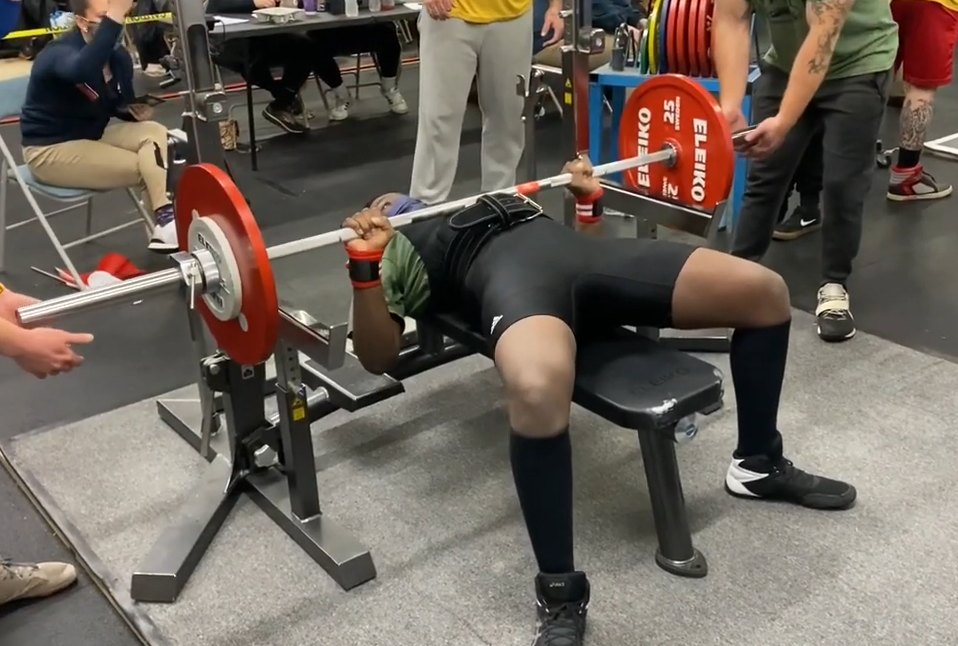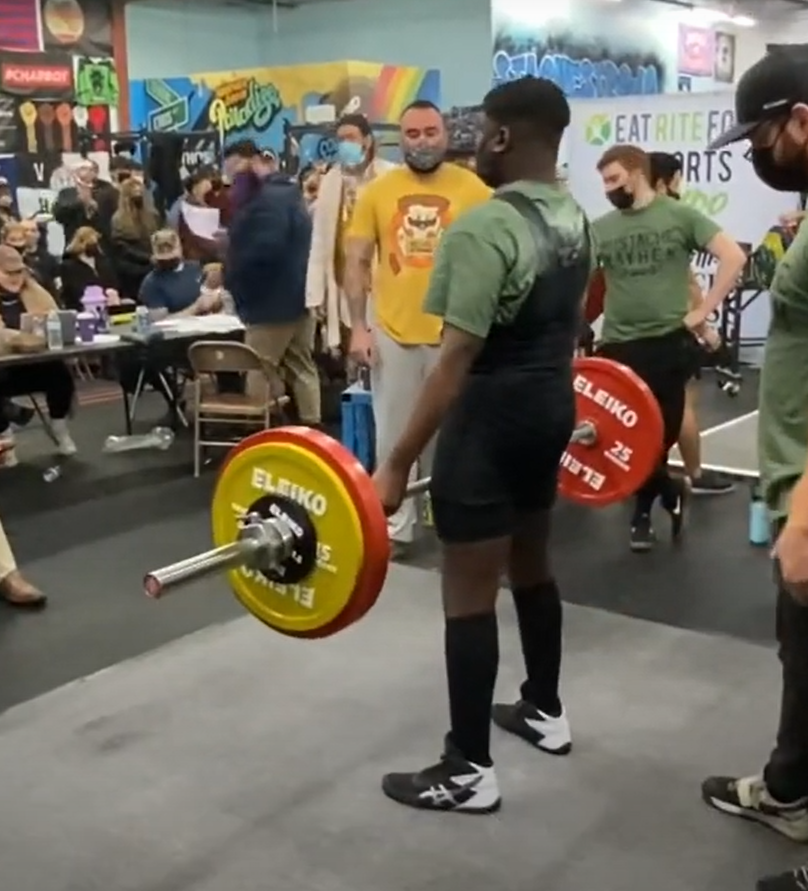When working with new lifters, a common misconception I often encounter is the belief that moving slowly and deliberately is safer and more effective for building strength. Many lifters, particularly those who have trained on their own, intentionally move the bar very slowly, thinking this will protect them from injury. While control and form are essential, moving the bar quickly, with good technique, is a fundamental part of developing strength.
The key to strength gains is force production. To understand the importance of bar speed, we need to understand a fundamental principle of physics: Force = Mass × Acceleration. If you move 100 pounds over a two-foot distance in two seconds compared to moving the same weight over the same distance in one second, you will produce significantly more force in the latter example because the acceleration is greater. By training to move quickly, you increase your ability to generate force. This force production is not only critical for improving strength but also for overcoming challenges during a lift, such as sticking points.
Moving fast helps recruiting more motor units which allows for better neurological efficiency. Moving the bar quickly, your central nervous system (CNS) is able to recruit more motor units. Motor units are groups of muscle fibers that are activated by a single motor neuron. Better motor unit recruitment means your body can synchronize muscle contractions more effectively, which is essential for moving heavy weights. Imagine you have a lightboard with 100 light bulbs. Moving quickly will allow all hundred lights to turn on all at once, Moving slowly will Individually turn on 40 light bulbs leaving parts of the room still in a shawdow. For strength development we want all the light bulbs to turn on instantaneously, that will give us the brightest room.
Strength training is about teaching your body to coordinate muscle contractions as a single, powerful unit. If you train slow, you’ll adapt to move slow, prioritizing the development of slow twitch (endurance based) muscle fibers over fast twitch (strength based).
Strength training, adaptations promote:
These robust physical adaptations require training weights and speeds above a certain threshold. When you train above a certain threshold you get stronger. Think about how we exists. We live in a physical world. We physically move and move things in this world. Therefore the stronger we become the easier it is to live. The number one biggest issue with aging is lack of strength. I’m sure you know plenty of people this fit this description .
Another critical benefit of training with speed is the ability to move past sticking points—the parts of a lift where you are most mechanically disadvantaged. For example:
In the squat, the sticking point is often a few inches out of the hole.
In the bench press, it’s when your elbows approach 90 degrees.
In the deadlift, it occurs when your quadriceps stop contributing to bar acceleration.
By training your body to move fast, you can build momentum and carry the bar through these sticking points more effectively.
Training with maximum speed improves your rate of force development (RFD), which is the ability to produce force quickly. This is a crucial skill for athletes and lifters alike, as it allows you to perform explosive movements and achieve peak performance in minimal time. Quicker you can get to maximum force development the less time on the tension more force you’re producing.
Utilizing the stretch-shortening cycle by a fast eccentric (downward) movement. During exercises like the squat or bench press moving fast down help produce more potential energy for the concentric (upward) phase. When you move fast think of your muscles acting as elastic bands: when stretched quickly, they store and release energy efficiently. This is the stretch-shortening cycle at work, and training to maximize its potential can dramatically enhance your strength and power.
Balancing Speed and Form
While moving the bar fast is important, it should never come at the expense of good form. Speed must be layered on top of solid technique. For example:
If moving quickly causes you to miss depth in a squat, lose spinal extension, or let your heels come off the ground, you may need to slow down and refine your technique.
Use lighter sets and back-down sets to practice moving fast with perfect form. For heavier sets, focus on maintaining technical proficiency while still aiming for maximal intent.
Slow is beneficial when you are trying to build positional strength or endurance. For example, incorporating a 3-position pause bench press at low percentages (50-70%) for several weeks can help build proper elbow position, overall tightness and bar path. Once these foundational improvements are made at lower intensities, you can transition back to regular bench press at moderate intensities (60-80%), applying the positional gains to faster, more dynamic lifts.
This phase-based approach ensures that your training adaptations support your long-term goal of moving weight efficiently and explosively.
Whether you are pausing or exploding through a lift Intent is everything. Your intent should always be maximal. Every rep, regardless of the phase of training, should be performed with purpose. This ensures that you’re building the physical and neurological adaptations needed to lift heavier weights safely and effectively. Even the warm up sets should be with intent it's an additional chance for technique practice.
Conclusion
The misconception that slow movements are inherently safer can limit your progress as a lifter. To build strength, you need to challenge your body’s ability to move weight quickly and efficiently while maintaining perfect form. By incorporating speed into your training, and understanding when slower movements are appropriate, you can unlock new levels of strength and performance.
So next time you step into the gym, ask yourself: “am i moving with intent? Am I challenging my speed while maintaining control?” Remember, strength is not just about how much weight you can lift—it’s about how efficiently you can move it and how present you can be.



